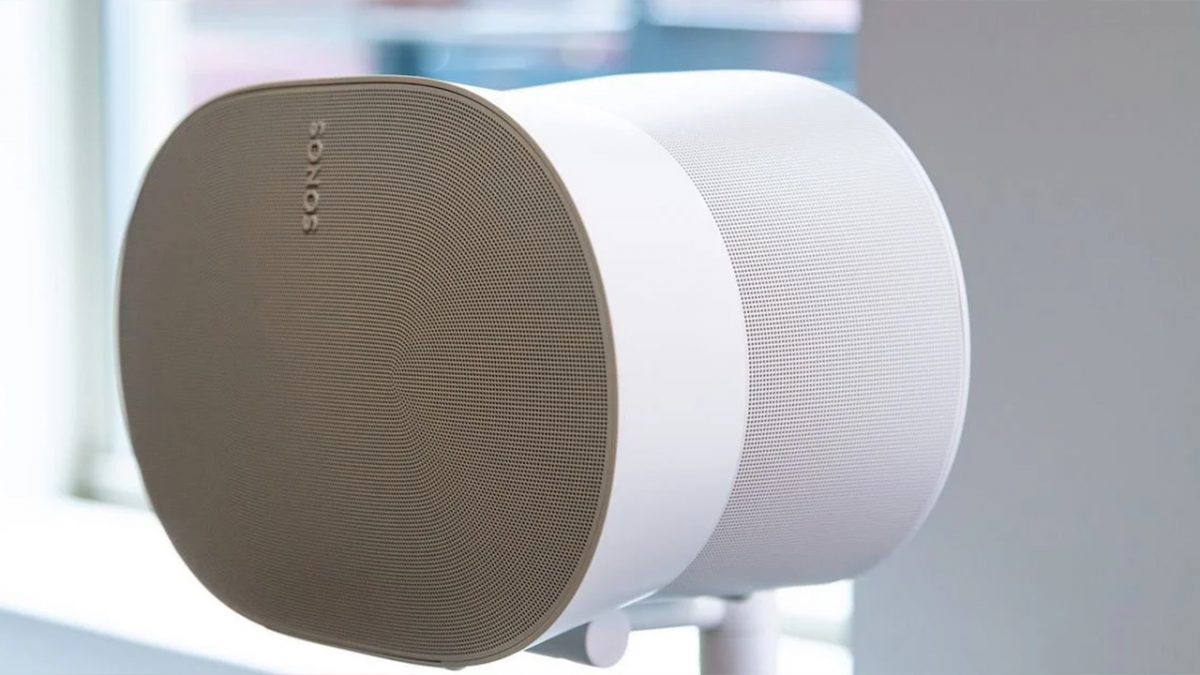Sonos to add support for spatial audio on Apple Music on March 28

If you’re an Apple Music user, you’d be happy to know that before the month ends, you’ll get support for spatial audio, courtesy of Sonos. That is if you have any clue about spatial audio, to begin with.
But I digress, so let’s go back to the news. According to Sonos, its new products, namely the Sonos Era 300, Arc, and Beam (Gen 2) are capable of delivering a “multi-dimensional immersive sound experience” that will place listeners at the center of their music.
What’s more, it’s going to be Apple Music’s first partner offering this feature. Sonos is pretty proud of its tech, too, since according to Giles Martin, VP of Sound Experience at Sonos “the company continues to put its listeners at the forefront of sound innovation, ensuring they have access through Apple Music to transformative experiences like spatial audio with Dolby Atmos”.
It’s no coincidence that Sonos announced its partnership with Apple Music the same day it unveiled the Era 100. This is a pair of speakers that will replace a major Sonos hit, the One, at $249. There’s a new offering too. The Era 300 will set you back $449 and offer six speakers strategically located to offer three-dimensional sound.
One of the reasons why Sonos is poised to become popular with Apple Music enthusiasts is that they support Dolby Atmos.
Of course, the Era 100 comes with other goodies, too. This smart speaker is humidity resistant (presumably so you can sing in the shower alongside your favorite songs), and it supports several connection methods such as Line In, WiFi, Apple AirPlay 2, and Bluetooth.
So far, it looks like a top choice for a consumer-oriented smart speaker, and it possibly is. But what about the spatial audio super-extra-sensory experience it offers? That’s another story.
You see, the problem with spatial audio in music is that, unlike movies, music is generally not mixed with spatial audio in mind. This is because of technical limitations in older recordings, and convenience in newer ones. What spatial audio does is “virtualize” new channels in ingenious ways so you can get a more immersive sense. This magic can be exciting unless you’re using Windows 10 version 20H2.
That doesn’t mean, however, that more music with surround features won’t be produced in the future, offering true spatial sound by design. This may be one of the implications by Giles Martin when he pointed out that “It’s a thrilling time in music as spatial audio - and the artistic creativity that comes with it - continues to grow”.
That last bit is somewhat challenging since music normally puts you in a listener's perspective, that is, you enjoy music by listening to others in front of you. Does it work if you’re “inside” a band, however? Even though the answer is subjective, it’s a topic worth experimenting with.
If you’re a Sonos enthusiast, you can give it a try and check for yourself. Don’t forget to throw in some lightning-fast air guitar licks while you’re at it!
Stop giving the gimmick of “spatial audio” attention.
Audio wasn’t meant to go through a convoluted , proprietary and inexplicable signal and effects chain.
Years of “innovation” and still no use found for anything other than mono and stereo.
Wanted something more for a laugh? It’s already been invented, and it’s called 2.1, 5.1, and 7.1.
“Make it sound like the instruments are all around me” yeah we had a term for that, it was called sound-stage positioning, or more simply, mixing!
“I would like to hear three-dimensional audio, please” – statements dreamed up by the utterly delusional.
——
LOOK at some of the statements companies have been putting out and expecting the public to take seriously:
“sounds can be placed “virtually anywhere” in the hemisphere”
“dynamic head-tracking utilises the accelerometer/gyroscope”
“directional audio filters and subtle adjustment of the frequencies are applied to the audio each ear receives”
——
“Hello yes can I have a ‘theatre-like’ experience”
They have played us for absolute fools!